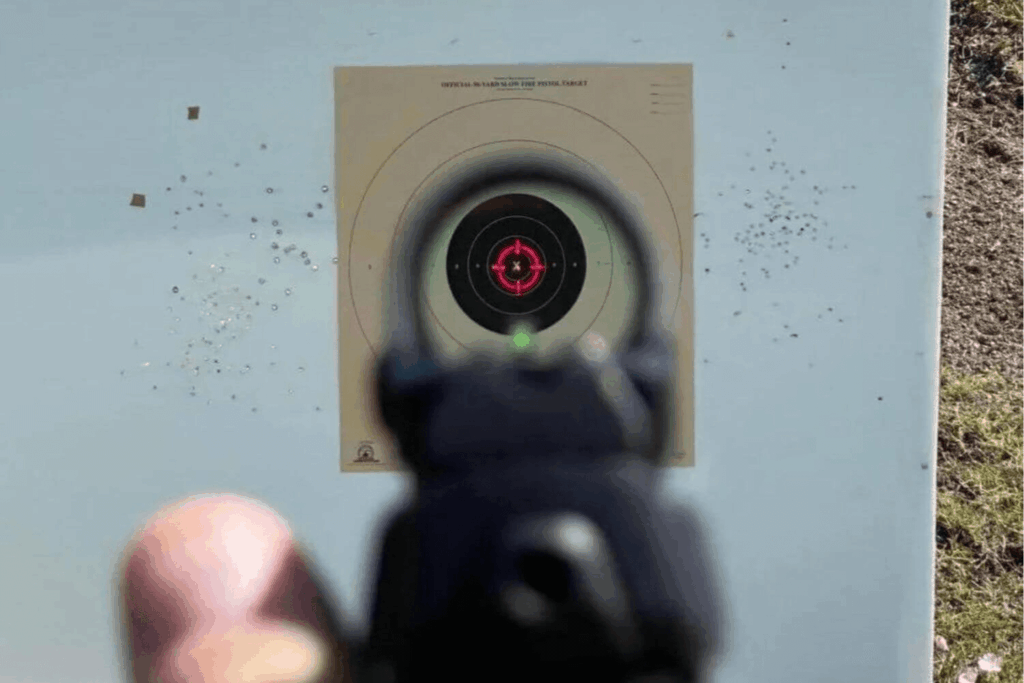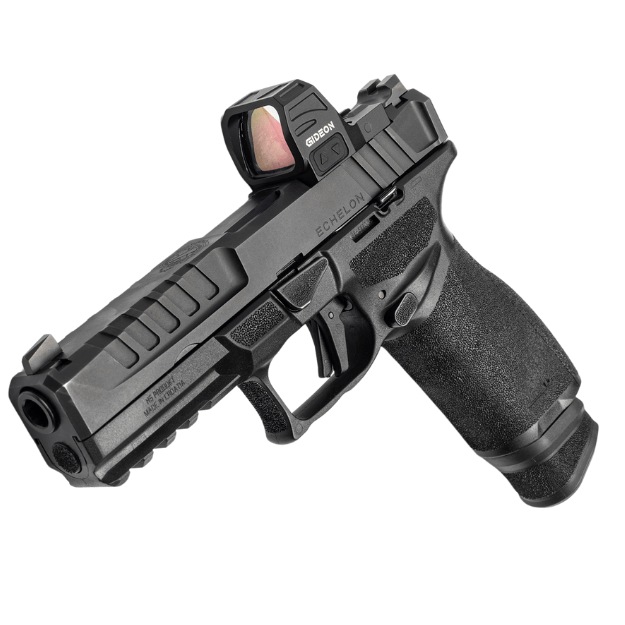0

Modern optics, with their bright dot reticles and adjustable features, make accurate aiming faster and more intuitive. By using an LED emitter to reflect the projected red dot, pistol aiming becomes as simple as looking through the lens and lining up the projected reticle with the target. Practical gun optics can improve your speed of target acquisition, accuracy, and precision on the range or in the field. Choosing the right reticle for your gun depends on personal preference and how you intend to use your firearm. However, developing your preference starts with understanding the available features of your reflex optic options.

Red dot sights mount directly to optics-ready slides to provide a secure sight picture that uses a bright circle or dot reticle to give you a contrasting aiming point. Lining the dot up on your target is faster and often simpler than using traditional iron sights, and since you can line the shot up with your chosen reticle anywhere in the lens, it’s more forgiving. Our red dots have adjustable brightness so you can adjust the illumination to stand out on the target or in almost any ambient lighting condition, and windage and elevation are adjustable for easier zeroing.
The external housing is made of 7075-T6 aircraft-grade aluminum for durability and resistance to the elements, and it’s engineered to be water—and shockproof under standard field conditions. We also stand behind our products with a replacement warranty that covers your optic if it stops working for any reason short of intentional damage. We take the guesswork out of picking a reliable optic so you can focus on choosing the reticle, mount pattern, and window size that’s right for your gun.
The dot reticle on your “red dot” may not be a dot. It may not even be red. While purists can debate whether it’s right or wrong that red dots and reflex optics are interchangeable terms now, you need to know the options you have to find the most practical sight for your gun.

If you want to see the difference between dot reticles, circle-dot multi-reticles, and iron sights in practice, Mike covered a few of our options in this recent video. Our YouTube channel has reviews, demonstrations, and destructions of your favorite Gideon Optics products, so be sure to like and subscribe.
When you pick your optic, you’ll want to consider which options will work the best for the majority of your shooting. This can include choosing a color based on the time of day or night you will most often be active, picking a dot reticle that’s most appropriate for your expected engagement ranges, and finding an optic that fits your gun’s mounting pattern or an adapter plate.
We build practical optics that everyday gun owners can afford. Sign up to get sales promotions and new product announcements delivered to your email. Order your pistol red dots and rifle scopes from Gideon Optics today.
🕛 Ends 5/26 at 11:59pm. No code needed. Not valid with other coupons or discounts.